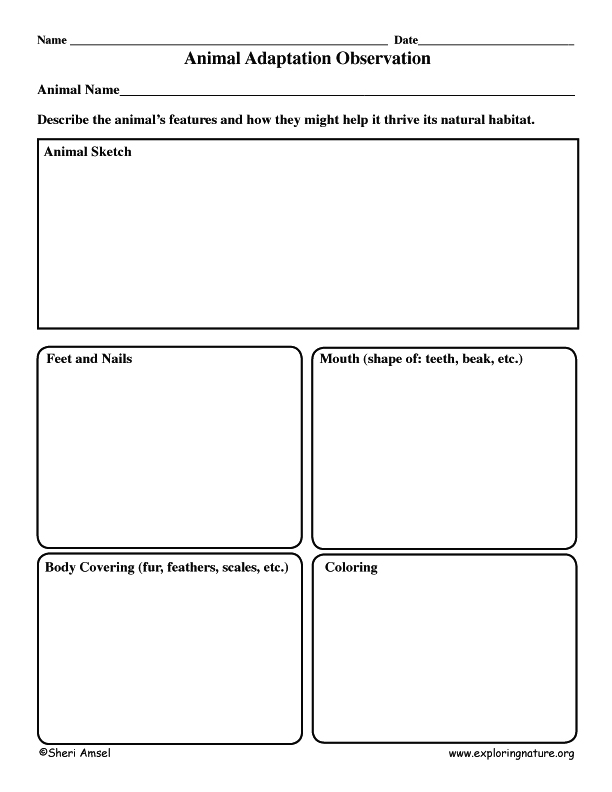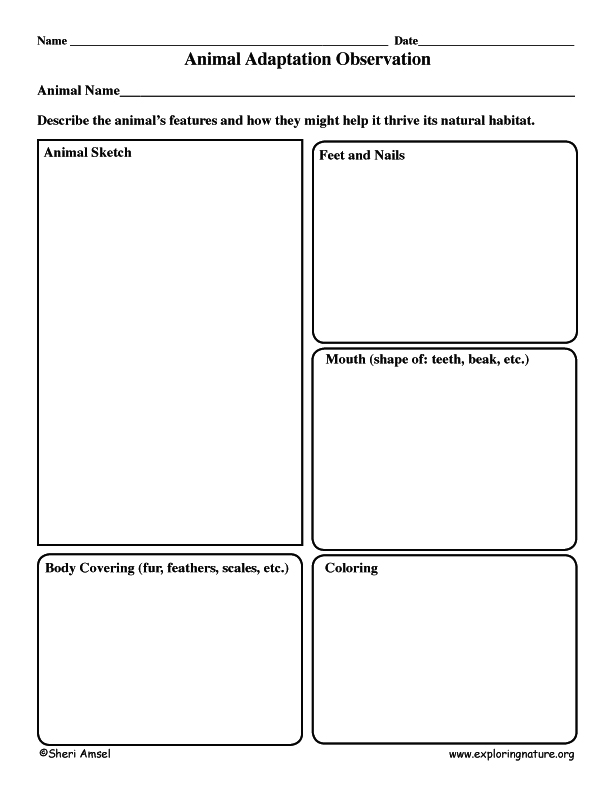

Observing animals at the zoo, the schoolyard, park, or in a wildlife movie can be fun, but can also be educational. When you observe an animal think about how its physical features help it stay alive, find food and reproduce in its habitat.
For example:
1) How does its feet help it travel over its landscape, grab and tear its prey (or plants), protect it from other animals.
2) How does its body covering (fur, feather, scales, etc.) help it keep warm or cool, protect it from predators, blend in or even attract a mate?
3) How does its mouth (teeth, beak or other mouth parts) help it get food, defend itself, call in warning or to attract a mate?
4) How might its body shape (leg length, neck length, etc) affect its food gathering, predator defense or other survival needs?
To learn more about Animal Adaptation: Click Here

